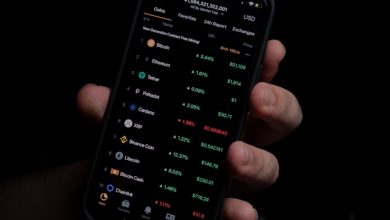Decentraland (MANA): Exploring the Metaverse Economy

- What is Decentraland and how does it fit into the Metaverse?
- The rise of digital assets in the virtual world
- Exploring the decentralized economy of Decentraland
- Investing in virtual real estate: a beginner’s guide to MANA
- NFTs and the future of virtual ownership in Decentraland
- The potential impact of blockchain technology on the Metaverse economy
What is Decentraland and how does it fit into the Metaverse?
Decentraland is a virtual reality platform powered by blockchain technology that allows users to create, experience, and monetize content and applications. It functions as a decentralized, user-owned virtual world where individuals can buy, sell, and develop virtual real estate known as LAND. This digital landscape is divided into parcels of LAND, each represented by a unique token on the Ethereum blockchain.
Decentraland aligns itself with the concept of the Metaverse, which refers to a collective virtual shared space, typically created by the convergence of multiple virtual worlds. The Metaverse is envisioned as a fully immersive digital universe where users can interact with each other and digital environments in real-time. In this context, Decentraland serves as a key player in shaping the emerging Metaverse economy by providing a platform for virtual experiences, social interactions, and economic transactions.
Through Decentraland’s platform, users can explore different virtual environments, participate in events, play games, attend virtual conferences, and engage in social activities. The platform leverages blockchain technology to ensure ownership and scarcity of virtual assets, enabling users to buy, sell, and trade digital goods securely. This decentralized approach empowers users to have full control over their digital assets and identities within the virtual world.
Overall, Decentraland represents a pioneering effort to create a decentralized, user-centric Metaverse that offers a wide range of opportunities for social interaction, creativity, and economic activity. As the concept of the Metaverse continues to evolve and gain traction, Decentraland’s role in shaping the future of virtual reality and digital economies is becoming increasingly significant.
The rise of digital assets in the virtual world
The rise of digital assets in the virtual world has been a significant trend in recent years. Decentraland (MANA) is at the forefront of this movement, offering a platform for users to buy, sell, and trade virtual real estate and other digital assets. This virtual economy is built on blockchain technology, ensuring transparency and security for all transactions.
Digital assets in Decentraland can take many forms, from virtual land and buildings to in-game items and artwork. These assets are stored on the blockchain, making them immutable and scarce. As a result, they can hold real-world value and be traded on various online marketplaces.
One of the key benefits of digital assets in Decentraland is the ability for users to truly own their virtual property. Unlike traditional online games where items are owned by the game developer, in Decentraland, users have full control over their assets. This ownership opens up new possibilities for monetization and creative expression in the metaverse.
The concept of digital assets in Decentraland is still relatively new, but it has already attracted a growing community of users and developers. As the platform continues to evolve and expand, we can expect to see even more innovative use cases for digital assets in the virtual world. Whether it’s virtual real estate, unique collectibles, or virtual experiences, Decentraland is paving the way for the future of the metaverse economy.
Exploring the decentralized economy of Decentraland
The decentralized economy of Decentraland is a fascinating aspect of the Metaverse that has garnered significant attention in recent years. Decentraland is a virtual world built on the Ethereum blockchain, where users can buy, sell, and trade virtual land, goods, and services using the native cryptocurrency, MANA. This decentralized economy operates independently of any central authority, allowing for peer-to-peer transactions and interactions.
In Decentraland, users have the freedom to create unique experiences, such as virtual events, games, art galleries, and more, all within the confines of their virtual land parcels. This has led to a vibrant ecosystem of creators, developers, and entrepreneurs who are actively shaping the virtual world and driving economic activity.
One of the key features of the decentralized economy in Decentraland is the concept of digital scarcity. Land in Decentraland is a finite resource, with a limited supply of parcels available for purchase. This scarcity has led to a thriving real estate market within the virtual world, with land prices fluctuating based on demand and location.
Moreover, Decentraland has its own decentralized autonomous organization (DAO) called the Decentraland Foundation, which oversees the development and governance of the platform. MANA holders can participate in governance decisions by voting on proposals that impact the future of Decentraland, further decentralizing control of the virtual world.
Overall, the decentralized economy of Decentraland offers a glimpse into the future of virtual economies, where users have ownership rights, creative freedom, and financial opportunities in a digital landscape. As the Metaverse continues to evolve, Decentraland stands out as a pioneering example of what is possible when decentralization and virtual reality converge.
Investing in virtual real estate: a beginner’s guide to MANA
Investing in virtual real estate can be a lucrative opportunity for beginners looking to enter the metaverse economy. Decentraland (MANA) is a leading platform that allows users to buy, sell, and build on virtual land using blockchain technology. By investing in MANA, individuals can become virtual landowners and participate in a growing digital economy.
One of the key advantages of investing in MANA is the potential for long-term appreciation of virtual real estate values. As the metaverse continues to expand, the demand for virtual land is expected to increase, driving up prices for desirable locations. By purchasing MANA tokens and acquiring virtual land parcels, investors can position themselves to benefit from this trend and potentially realize significant profits in the future.
Another benefit of investing in MANA is the ability to generate passive income through virtual real estate development. By creating and monetizing virtual experiences on their land parcels, investors can earn MANA tokens from visitors and tenants. This can provide a steady stream of income over time, allowing investors to recoup their initial investment and potentially earn additional profits.
In addition to the financial benefits, investing in MANA can also offer individuals the opportunity to participate in a vibrant and growing community of virtual landowners and developers. By connecting with other users on the platform, investors can collaborate on projects, share knowledge and resources, and contribute to the overall growth and development of the metaverse economy.
Overall, investing in MANA can be a rewarding experience for beginners looking to explore the potential of virtual real estate in the metaverse. By acquiring virtual land parcels, generating passive income through development, and connecting with the community, investors can position themselves for success in this emerging digital economy.
NFTs and the future of virtual ownership in Decentraland
NFTs, or non-fungible tokens, have been a game-changer in the world of virtual ownership within Decentraland. These unique digital assets are revolutionizing the way users buy, sell, and trade virtual goods in the metaverse. By leveraging blockchain technology, NFTs provide a secure and transparent way for users to prove ownership of digital assets.
With NFTs, users in Decentraland can purchase virtual land, clothing, accessories, and even art pieces, all of which are represented as unique tokens on the blockchain. This not only gives users full control over their virtual possessions but also opens up new opportunities for creators and developers to monetize their creations.
As the popularity of NFTs continues to grow, so does the potential for virtual ownership within Decentraland. Users can now truly own their digital assets, without the risk of duplication or theft. This has led to a thriving virtual economy within the metaverse, where users can buy, sell, and trade NFTs with ease.
The potential impact of blockchain technology on the Metaverse economy
Blockchain technology has the potential to revolutionize the Metaverse economy by providing a secure and transparent platform for transactions. By utilizing blockchain technology, decentraland (MANA) can create a decentralized marketplace where users can buy, sell, and trade virtual assets with confidence. This technology ensures that all transactions are recorded on a public ledger, making it impossible to alter or manipulate the data. Additionally, smart contracts can be used to automate transactions, eliminating the need for intermediaries and reducing costs.



